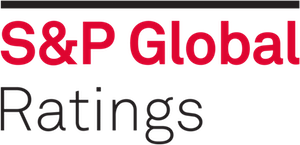After picking up roughly 20% of the roughly $92 billion of insurance industry losses from major hurricanes Harvey, Irma and Maria, half of the top 20 global reinsurance firms tracked by rating agency Standard & Poor’s have actually increased their exposure to natural catastrophe risks.
 S&P explains that this heightened catastrophe risk exposure held by some of the world’s largest reinsurance firms means that they will have a higher sensitivity of earnings and capital toward catastrophe risk, than they did prior to the major losses of 2017.
S&P explains that this heightened catastrophe risk exposure held by some of the world’s largest reinsurance firms means that they will have a higher sensitivity of earnings and capital toward catastrophe risk, than they did prior to the major losses of 2017.
The magnitude of the 2017 losses was roughly three times what reinsurers would typically expect from natural catastrophes in a normal year, which S&P notes did hurt the industry’s earnings and a few specific players’ capital adequacy, but was insufficient to cause any material uplift in global reinsurance prices.
But still the catastrophe exposure of half of the top-20 global reinsurers has increased, something we at Artemis have tracked through the major renewal seasons so far, where a number of the largest players have underwritten larger portfolios of property risk, especially in the United States.
The reason has been to capitalise on what uplift in rates there has been, after the events of last year, but the result is that some players are more exposed to nat cat risk in 2018 than in 2017, S&P explains.
The rating agency says that reinsurers have entered the 2018 North Atlantic hurricane season with “robust earnings and capital buffers,” but S&P also notes that any “repeat of 2017 nat cat losses could test earnings and capital adequacy levels.”
Any repeat of last year’s catastrophe losses could result in negative rating actions for overexposed reinsurers, S&P warns.
Across the entire top-20 reinsurers S&P says, “We assess that the top-20 global reinsurers are only marginally more exposed relative to the same period in 2017. We estimate that capital at risk rose slightly to 31% of total shareholders’ equity exposed in January 2018 renewals, compared with 30% in the same period in 2017.”
But on an individual company basis S&P found “material exposure changes” from year to year, with half of the reinsurers more exposed than they were before.
The exposure increases are due to a mix of exposure growth and capital deterioration at the reinsurers in question, with earnings at risk rising to 0.89x profit before tax in 2018 versus 0.85x in 2017, S&P says.
Interestingly, S&P now believes that under a 1-in-10-year aggregate loss, which would imply global insured losses of roughly $100 billion in a year, reinsurers would still be likely to show profitable results, on average.
But an aggregate loss of this magnitude “could become a capital event for a third of global reinsurers” S&P says.
Defensive actions have been seen, with some reinsurers buying more retrocession to reduce their exposure to more extreme aggregate loss years, but reinsurers have been balancing protection with book expansion for higher profits, a difficult balancing act to achieve.
“As reinsurers balance the need to improve their risk return profile against the need to protect their balance sheet, it is not surprising that some reinsurers increased their risk exposure this year as a result of price increases,” S&P explained.
When looking at resilience to different return period catastrophe losses, S&P notes that different reinsurers fare well to differing degrees.
“Our analysis highlights that the Bermuda property catastrophe specialists and London reinsurers are likely to be the least resilient as a result of their higher-than-average appetite for catastrophe risk,” the rating agency says.
Adding, “We found that eight of the top-20 global reinsurers are unlikely to maintain capital adequacy of at least ‘AA’ confidence level following a 1-in-250-year aggregate loss, including normalized earnings and the annual nat cat budget.”
Finally, S&P concludes, on the sector’s ability to withstand further major losses in 2018, “Although the sector is entering the 2018 cat season with robust capital and earnings, a repeat of 2017 nat cat losses would likely wash away full-year earnings and cat budgets and further test reinsurers’ capital resilience.
But S&P also believes further major losses would result in a greater chance of price increases in their wake, saying, “In such a scenario, the picture might be quite different from what we have observed so far in 2018, since we think price hikes would be likely after the events.”
However that could also result in a situation where, “More players could take more risk on balance sheet, leaving the sector more exposed,” the rating agency says.
As an aside, S&P’s analysis does not mention third-party capital and the increasing role it is playing in underwriting natural catastrophes risks, or the fact that most of the major reinsurers have upsized their third-party capital vehicles and structures for the 2018 renewals.
The fact that global reinsurers have underwritten more nat cat risk does not tell the full picture if those same reinsurers are sharing more of that risk with third-party investors.
Third-party capital use could act as a moderating effect on the loss potential of the industry and those top-20 reinsurance firms that have leveraged the appetite of the capital markets as a tool to help them increase their catastrophe portfolios may not be as exposed to capital impairment as you might think.
 View all of our Artemis Live video interviews and subscribe to our podcast.
View all of our Artemis Live video interviews and subscribe to our podcast.
All of our Artemis Live insurance-linked securities (ILS), catastrophe bonds and reinsurance video content and video interviews can be accessed online.
Our Artemis Live podcast can be subscribed to using the typical podcast services providers, including Apple, Google, Spotify and more.































